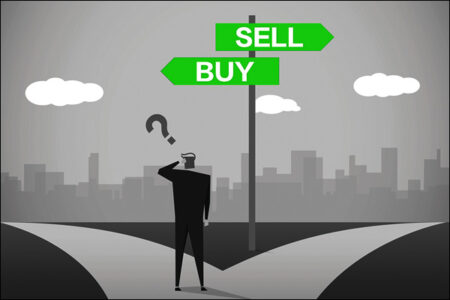
Are portfolio manager fees “the only reliable predictor of performance”? “The lower the fees, the higher the returns realized by investors.”[1] It depends. In a pooled investment vehicle, where the client is merely a creditor of the real owner of the investment, perhaps. For separately managed accounts made up mostly of individual common stocks, probably not. The difference between an active management fee of 100 basis points on a $1 million account and an average 35-basis-point fee for most passive investment vehicles is substantial. Some passive vehicles have lower fees and some predict we will see 10-basis-point fees or lower as investment firms race to lower fees.
If you are in a separately managed account of individual common stocks acquired in lots over a number of years, a technique called tax-loss selling is available to you and your investment manager. This is not possible if your portfolio is made up of pooled investment vehicles, except in a limited way to sell the vehicle (see below). The advantage of using tax-loss selling is estimated to be between 110 and 142 basis points annually but realized intermittently over a number of years, according to one analysis.[2] Down market years are particularly valuable. A second study put the advantages at “100 basis points annually and potentially more in highly volatile years.”[3] A quick check of the math shows that the use of tax-loss selling more than offsets the difference in fees before adding in the benefits of active management in the right hands.
Individual Stocks Purchased in Lots
When a stock, put forward on the recommendation of a portfolio manager, is voted onto the Monitor List at Woodstock, portfolio managers begin to buy it for client accounts. A full position at Woodstock might be a 3% position, so 30 to 40 stocks typically make up a portfolio. However, a new stock on the Monitor List might receive a 0.5% or 1% position initially as the manager seeks to become comfortable with that company’s management team, business prospects and how the market reacts to the company and its news. Over time, the position may grow through increases in valuation and, also, by purchasing additional shares.
Each purchase of shares creates its own “lot” with a specific cost. If a stock’s price chart moves steadily from the lower left to the upper right, each purchase will have a higher cost basis than the previous purchases. With a stock that the manager has confidence in, temporary “bad news” may create the opportunity to “buy on the down dip,” creating lots with various costs, not depending on chronology. In a market downturn, such as at the end of 2022, some “tax lots” of even good companies may be “underwater,” providing the opportunity for generating realized loses to offset realized gains taken in the portfolio during the year. This is called “tax-loss selling,” a very valuable tool for increasing portfolio value, independent of performance.
After discussing fees, two other comments should be aired and discussed concerning the benefits of active management. Change happens slowly, so its impact on stocks will be slow. You don’t have to move quickly (or “actively”). [4] And secondly, “more than 90% of active managers fail to beat the market over 10- and 20-year periods.”[5] The takeaways, or rebuttals, might be these: Look for a manager whose 10- or 15-year record at least approximates a market return with the opportunity for outperformance.[6] Also, at least realize that passive investment doesn’t respond in advance at all. It passively accepts the market’s verdict in arrears.
The current information on fees for mutual funds and exchange-traded funds (ETFs) is that the average expense ratio for equity mutual funds is 47 basis points. At the end of 2022, mutual funds had assets of $16.3 trillion dollars.[7] For ETFs, the average fee is 55 basis points but the asset-weighted average is 17 basis points, which “takes into account how much money is invested in what funds.”[8] At the end of 2022, ETFs had $6.5 trillion in assets. The math on fees works here as well. ETFs still have a ways to go to have more assets under management than mutual funds. Both mutual funds and ETFs are pooled investment vehicles.
Why pick active management in this very competitive world? I believe that the following is a very good answer: “You (the active investment manager) point out the value of objective advice, and of personal service… You move toward working with a well-defined niche where you know your clients on a deeper level”[9] and explain that with a Woodstock-type account you are able to offset the fee differential and, historically, deliver more-than-competitive performance.
We know that you are the most valuable business development tool that we have. Your referral of a friend, colleague or family member to us is the most important way that we grow. We thank you for your support and want you to know that we are dedicated to serving your best interest.
William H. Darling, Chairman & CEO
________________________________________________
